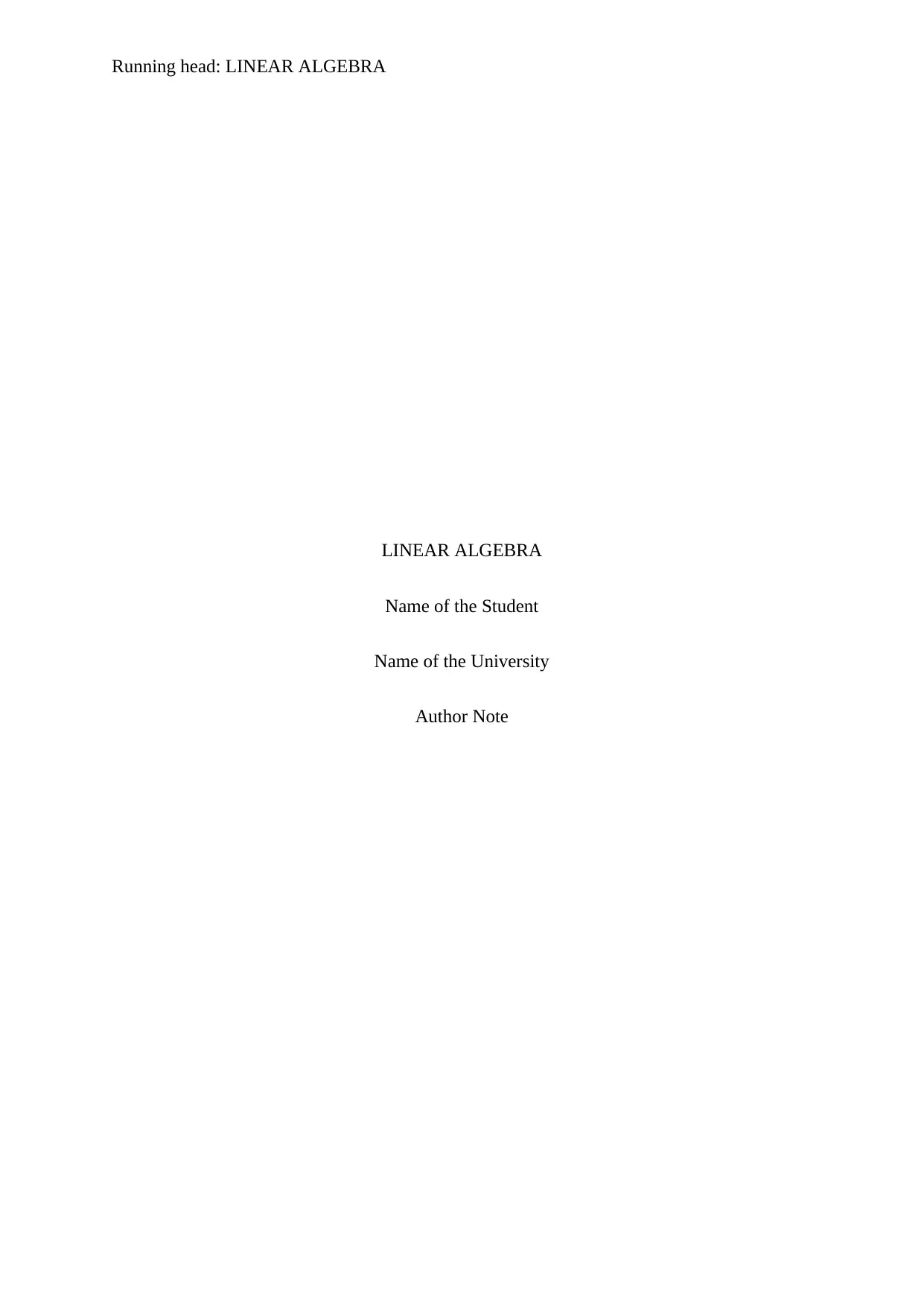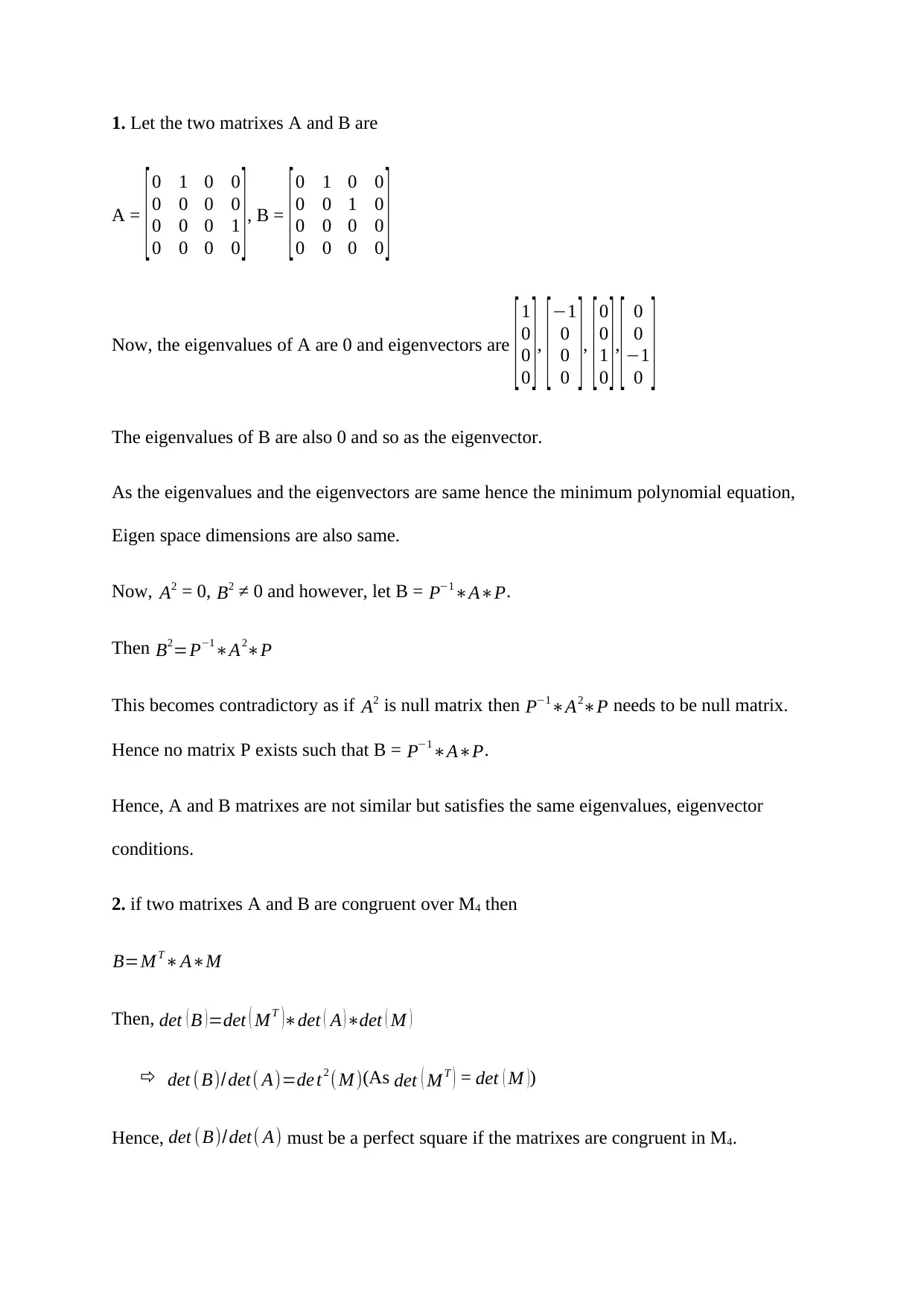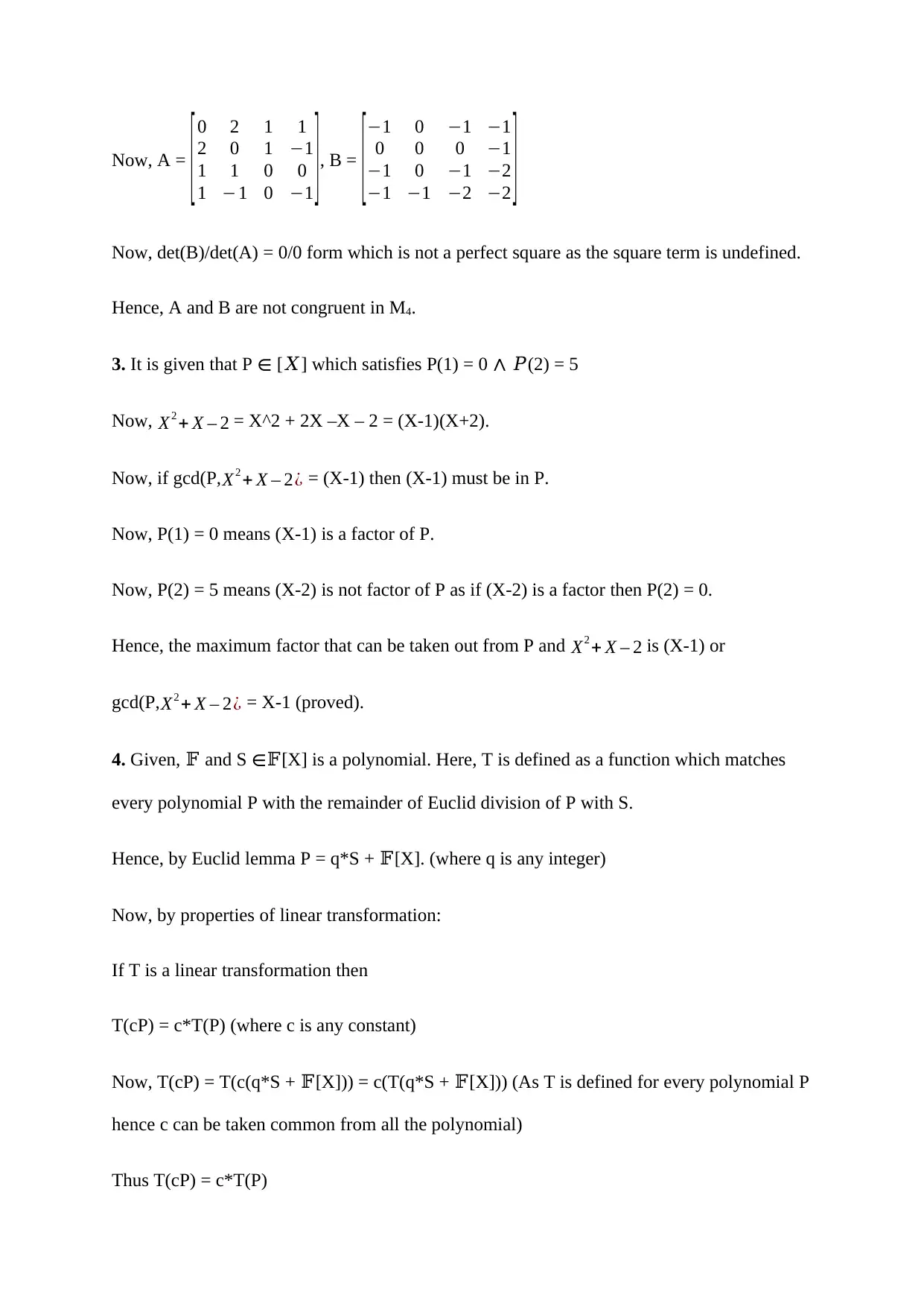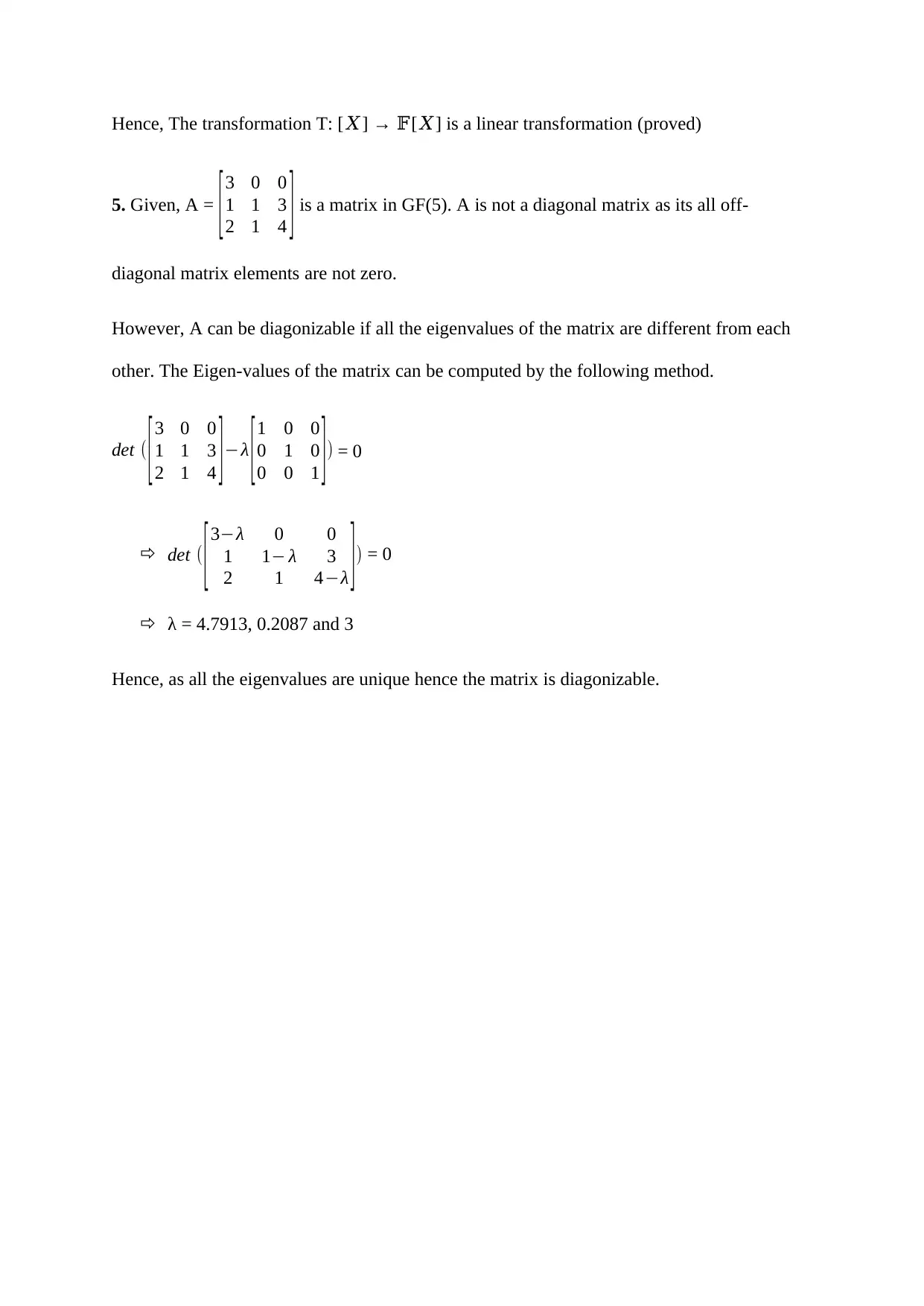Linear Algebra Homework: Matrix and Polynomial Problems Solved
VerifiedAdded on 2022/09/17
|4
|626
|18
Homework Assignment
AI Summary
This document provides a comprehensive solution to a linear algebra homework assignment. The solution addresses several problems, including demonstrating non-similar matrices with identical eigenvalues and eigenvectors, determining matrix congruence, proving a greatest common divisor property for polynomials, proving the linearity of a transformation based on Euclidean division, and determining the diagonalizability of a matrix in GF(5). The solutions employ rigorous mathematical reasoning and detailed calculations to arrive at the correct answers. The assignment covers fundamental concepts in linear algebra, such as eigenvalues, eigenvectors, matrix similarity, congruence, polynomial factorization, and linear transformations. The solutions provide clear explanations and steps, making it a valuable resource for students studying linear algebra and seeking to understand and solve similar problems.
1 out of 4










![[object Object]](/_next/static/media/star-bottom.7253800d.svg)